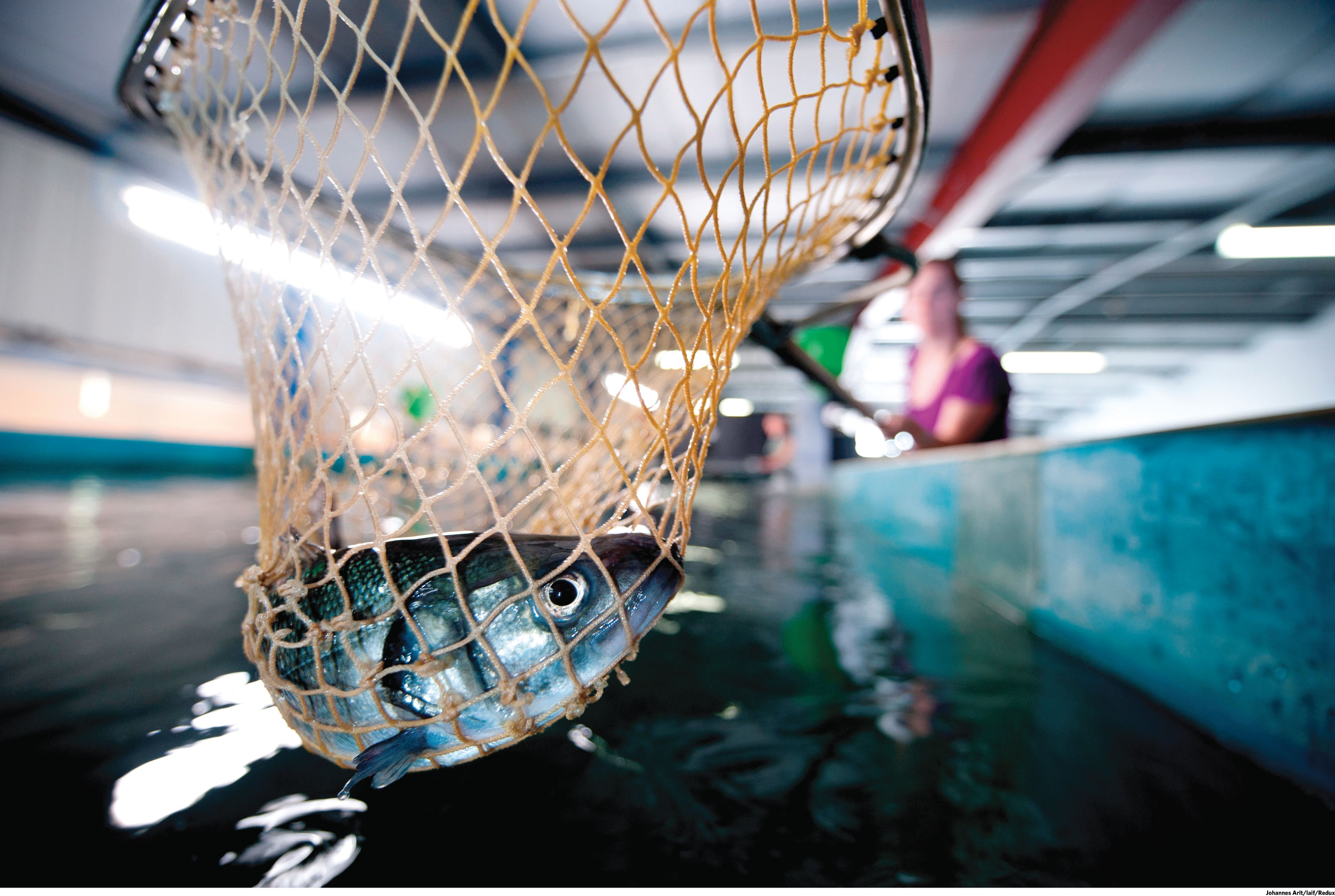Chapter Introduction
CHAPTER 31
FISHERIES AND AQUACULTURE
FISH IN A WAREHOUSE?
How one Baltimore fish scientist could change the way we eat

CORE MESSAGE
Although the oceans are vast, many fisheries are in serious jeopardy due to overfishing. Aquaculture allows us to raise substantial amounts of fish for harvest, taking some pressure off of wild stocks, but it comes with trade-offs. New aquaculture systems may address some of the drawbacks of traditional aquaculture methods.
AFTER READING THIS CHAPTER, YOU SHOULD BE ABLE TO ANSWER THE FOLLOWING GUIDING QUESTIONS
In Frenchman Bay, Maine, eight fishermen huddle around their aquaculturist instructor as he explains how to feed the “fingerling” cod, each a few inches long, in the wired cage beneath the water. The group is part of a new program meant to turn fishers into fish farmers. Instead of harvesting wild fish from the depths of the ocean, with factory ships and huge fishing nets, the fishers will learn how to raise them, from hatchlings to full-sized adults—how to feed them, how to monitor their health, and, ultimately, how to prepare them for sale. Today the fishermen are observing a coastal net-pen, where fish are raised in a system of stationary, floating nets, usually positioned in coastal waters. Tomorrow they will tour an indoor fish farm where the same types of fish are raised in colossal indoor tanks.
This, say experts, is the future of fishing.